re:Invent 2020 week 3 recap - Don't look back in anger
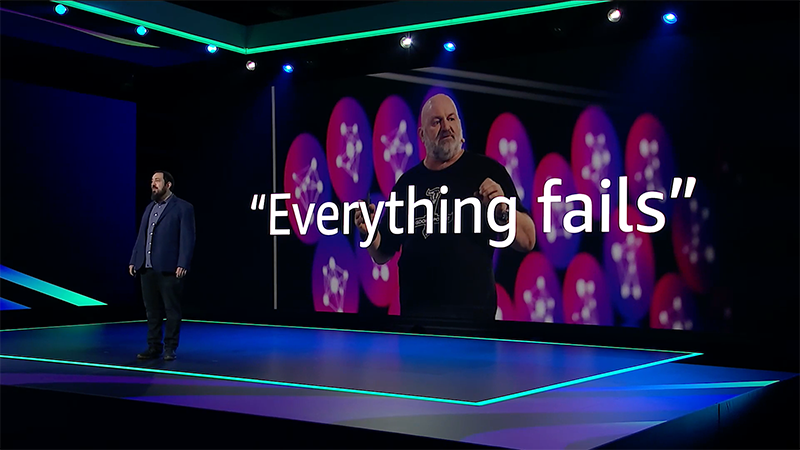
The three-week segment is turning towards the end, and everyone is dialling down little by little towards the holiday season. Sure, we have some additional content coming in January in the extra week of Jan 12-14 (for some unknown reason), but I guess it is fair to say that at least the core experience of this re:Invent starts to be done.
The re:Invent 2020 experience
Being fully virtual required something different at scale. And the magnitude from 50 000 to 250 000 attendees also speaks volumes, that when doing the content virtually, it is in the reach for a far greater audience.
The fact still remains that this content is largely produced locally from U.S. Therefore, many of the event sponsors - even the ones which operate in global scope - are based and headquartered in U.S. and their focus producing additional content and entertainment is focused only locally. You couldn’t find too many extra-curricular activities, which would have been targeted either form format, time or concept perspective to a globally remote audience.
The concentration of the most interesting content on the first runs was on U.S local time, quite naturally I would guess, but it was quite impossible to accommodate the time difference when working full time during daytime.
Live on not live
The content was in large amounts all pre-produced and pre-recorded. And that made a lot of sense, as there was no real interaction on the sessions themselves. The keynotes were advertised for being live-sessions, but at least, it was really apparent that Werner Vogel’s keynote was fully pre-recorded and edited. That is not a statement that it would be any worse from content or quality perspective, actually quite the opposite holds true. But that also begs the question, that how live the other keynotes were - and does that even matter. In any case, the keynotes were mainly very well-rehearsed and well-produced pieces of media content, and it should be appreciated.
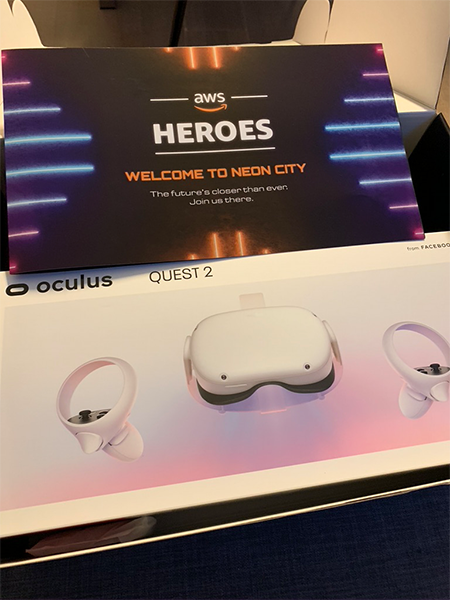
But at the same time, all the sense of being live online, and a bit of danger goes away. Being on the safe zone is comfortable, but not exciting. There was no room for error left this year, and in my opinion, it also takes something away from experience.
The sessions start to become available also to this youtube playlist, so stay tuned for updates.
Goodbye to Neon City
One thing that was available for a select group of people as an experiment was a re:Invent virtual experience called Neon City. AWS Heroes had the possibility to interact in a 3D virtual reality version of re:Invent called Neon City.
At the end of this week, it is time to say goodbye to this experience as well.
The big themes
This year there was no “Go Build” scale main theme reaching throughout the whole event. But the old ones were repeated nevertheless, including the classics like “Everything fails”, “Encrypt everything” and “There is no compression algorithm for experience.”

They had one new as well, “I am not preaching to the choir, they just sing. I’m preaching to the avenging angels with their fiery swords.” Quite catchy. We’ll see how that will stick for upcoming years ?
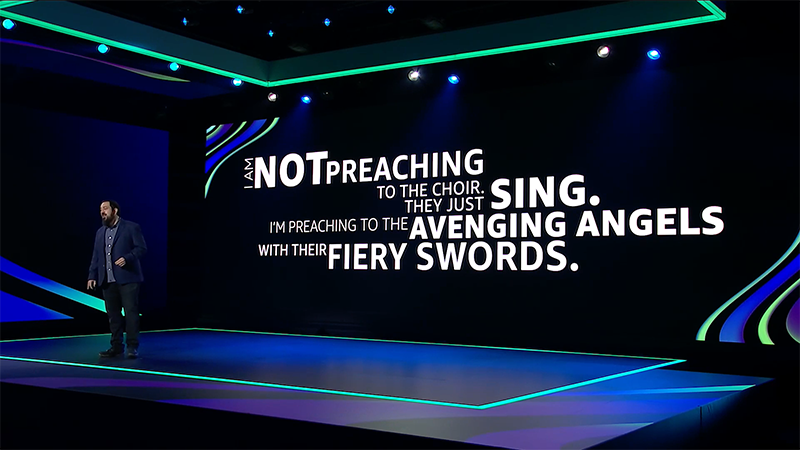
The practical enhancements
This year we were maybe missing any new groundbreaking big service announcement, but we did see a bunch of small, very practical enhancements, features and services rising, I would go as far as to say that this was first and foremost, a year of enhancements.
Machine Learning
Machine learning had it’s own keynote (which I covered in a separate post), which positions it as one of the pillars where AWS is clearly focusing and putting a lot of investment in moving forward.
The focus is more and more on the higher abstraction level services, and the strategy is to put ML-enabled services to the hands of every developer and data analyst.
Graviton
For such a small and tech specific feature, and something that was released already last year, this was pushed in almost every keynote. There is a greater shift from x86 to ARM-based architectures, not the least now when Apple popularized the transition with its M1 platform. And as it has been seen with the new Mac platform, the performance is blazing fast and surprised everyone.
My fellow AWS Partner Ambassador Luc van Donkersgoed wrote an excellent analysis about the ARM and the future of cloud, so I’m not going to refer to his blog for the excellent writeup.
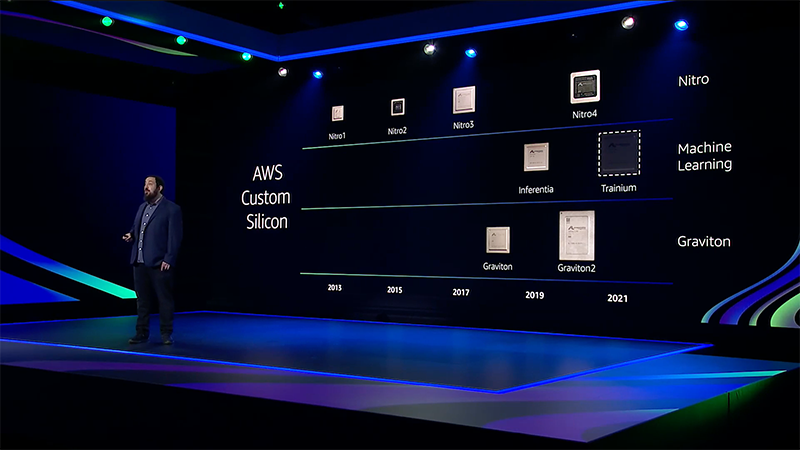
The Graviton is positioned as the cost-efficient, power-efficient and more performant choice.
I think there are reasons beyond these why it is pushed now so hard, and maybe there are things to predict for Intel’s future if they fail to keep up.
Sustainability
Sustainability and environmental matters were a topic covered a lot during this year, continuing the trend from a few past years, but even more strongly.

The sustainability was covered in most detail in the Infrastructure keynote.. Still, it was reiterated to an extent in others as well. I can see this going to be a trend for next years, if not decades.
One interesting aspect, which was not pointed to in any of the keynotes this year, is also Amazon Sustainability Data Initiative - ASDI, which intends to enable free access to foundational sustainability-related data stored in S3 on Amazon’s dime. Free to access and free to use. You can find the actual data sources.
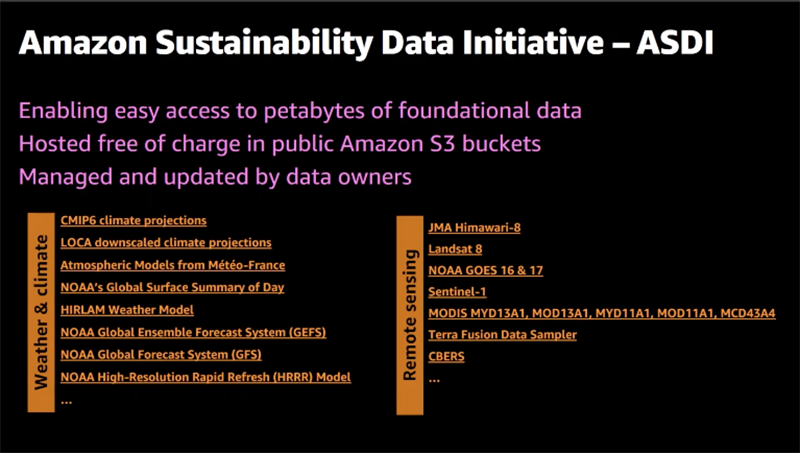
What about the future of re:Invent
We all hope that things will normalize, but it is fair to assume that there will be some new normal, where we will return. The re:Invent will probably not return to the same it was before this year. There are things for sure, which have now been tried out and can be learned from, even if we would be able to physically travel to the same place at the same time.
Some of the pre-produced content elements are for sure to stay. Even in past years, the access to keynotes was limited, but will we see a change in that. Could be.
Top Sessions
Here is a limited list of “generalists picks” from the content catalogue which I especially enjoyed
- Andy Jassy - keynote ( in youtube)
- Werner Vogels - keynote
- Stephen Schmidt - security leadership - the latest security updates in the Well-Architected categories of detection, identity management, data protection, and incident response. And how to approach zero-trust concept.
- Rudy Valdez - The evolution of cloud architecture - how to think about and approach building systems on the AWS platform
- Adrian Cockcroft - architecture trends and topics for 2021 - highlights patterns that are emerging with some of the most advanced AWS customers, including serverless first, continuously tested resilience, and Wardley mapping for technology transitions
Top Announcements
Full list of announcements is here: https://aws.amazon.com/new/reinvent/
Here are few I especially thought that very very practical and many falling in the category of “practical enhancements”.
- AWS Managed Service for Grafana & Prometheus - because running critical workloads at scale, you need observability to complement the criticality
- AWS Fault Injection Simulator - Chaos Monkeys in a Box, making the Chaos Engineering mainstream
- AWS Cost Anomaly Detection - because who likes surprises, when it is in the form of unexpected cost?
- AWS S3 strong consistency - because modern machine-to-machine architectures are easier when you can expect the data being consistent
- DNSSEC for Route 53 - quite a last-minute surprise addition, which has been a great ask